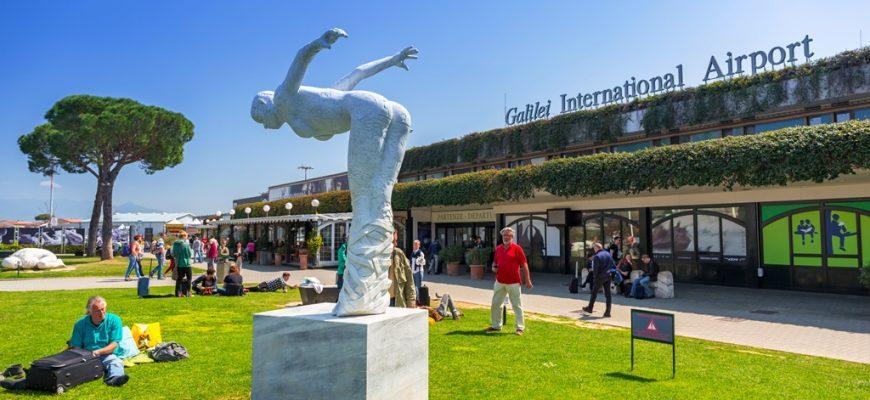Alright, so let me tell you about this little project I decided to tackle, something I ended up calling ‘Galileo Airport’. It wasn’t for work or anything, just one of those things you do to stretch your brain a bit on a quiet weekend.

Getting the Idea
I was actually just browsing online, saw some cool flight tracker apps, and then the name ‘Galileo’ – you know, the European satellite system – popped into my head. I thought, hey, wouldn’t it be a neat little exercise to try and build a super basic airport information display? Something that shows flights, and maybe, just maybe, incorporates a tiny bit of that ‘Galileo’ idea, even if it’s just pretend.
Honestly, I didn’t have a massive plan. My main goal was just to get something working that felt like those big boards you see at airports. You know, with flight numbers, where they’re going, and if they’re on time or delayed.
Picking the Tools
For the nuts and bolts, Python was my first pick. It’s just comfortable for me, quick to get things done. At first, I thought about just making it a text-based thing in the console. Super simple. But then I thought, “Nah, let’s make it a bit more visual.” So, I decided to use Flask. It’s a lightweight web framework, and I figured it wouldn’t be too hard to spit out some HTML with it. I wasn’t aiming for a masterpiece, just something functional.
First Steps: Laying the Groundwork
So, I fired up my code editor. The first thing I did was to figure out what data I needed for each flight. Pretty standard stuff:
- Flight Number (like ‘GA123’)
- Destination City
- Scheduled Time
- Status (like ‘On Time’, ‘Delayed’, ‘Boarding’)
- Gate
I just hardcoded a list of these flights to start with. Making up flight numbers and times was actually kind of fun. Then, I wrote a little bit of Python logic to randomly change the status of these flights over a few seconds. So, a flight might go from ‘Scheduled’ to ‘Boarding’, then to ‘Departed’. Just to make it feel a bit dynamic.

The “Galileo” Element (Sort Of)
Now, about that ‘Galileo’ part. Let’s be real, I wasn’t going to interface with actual satellites for this little project. That’s way out of scope! My ‘Galileo’ integration was, well, pretty symbolic. I added fake latitude and longitude coordinates to each flight. If a flight’s status changed to ‘Departed’, I’d just make these coordinates change a tiny bit with each update. Purely for show, to give a vague sense of movement. No maps, no actual tracking, just changing numbers.
Bringing it to the Web with Flask
Getting this stuff onto a webpage with Flask was the next big step. This is where I spent a fair bit of time. I had to remember my basic HTML – mostly just crafting a table to display the flight information neatly. Then, I set up Flask to serve this HTML page and pass the flight data to it.
One tricky bit was getting the page to update automatically. I didn’t want to keep hitting refresh to see status changes. I poked around for simple solutions. I know there are fancy ways to do this with JavaScript, but for this quick project, I ended up using a simple HTML meta refresh tag. Not the most elegant, perhaps, but it did the job for my little experiment!
Bumps in the Road
It wasn’t all smooth sailing, of course. There were definitely moments of frustration. Getting the HTML table columns to line up just right took more fiddling than I’d like to admit. My CSS skills are pretty much non-existent, so it was all very basic styling. There was also a point where the flight data wasn’t updating on the webpage as I expected, and I had to trace back through my Python code and Flask templates to figure out what I’d missed. You know how it is with these things – a misplaced comma or a typo can throw everything off.
And making it look even halfway decent was a challenge. It was functional, definitely not a design award winner. But that wasn’t the point, really.

The Payoff
But then, that moment when I first loaded the webpage and saw the list of flights, and then saw a status change automatically from ‘On Time’ to ‘Boarding’ – that was pretty satisfying! It’s these little victories that keep you going on personal projects.
What I Ended Up With
So, after a weekend of tinkering, ‘Galileo Airport’ was born. It was essentially a single web page. It showed a list of made-up flights, their destinations, times, gates, and statuses. These statuses would change on their own. And for ‘departed’ flights, you’d see their pretend coordinates tick up a bit. No fancy graphics, just text in a table, but it worked.
What I Learned from This
Overall, it was a good learning experience. It definitely helped me brush up on Python and Flask. I also learned that even making a very, very simplified version of an airport display system gives you an appreciation for how incredibly complex the real ones must be. Mine was a toy, but it was a fun toy to build.
And the ‘Galileo’ part? Well, it was more of a thematic starting point than a deep technical integration. But it got the ball rolling, and that’s what matters sometimes. It was a nice way to spend some free time, build something tangible, however small, and remind myself that coding can be a fun puzzle even outside of ‘serious’ work.










